Flowers I’m Growing that Look Like Feathers
This post follows our research editorial guidelines.


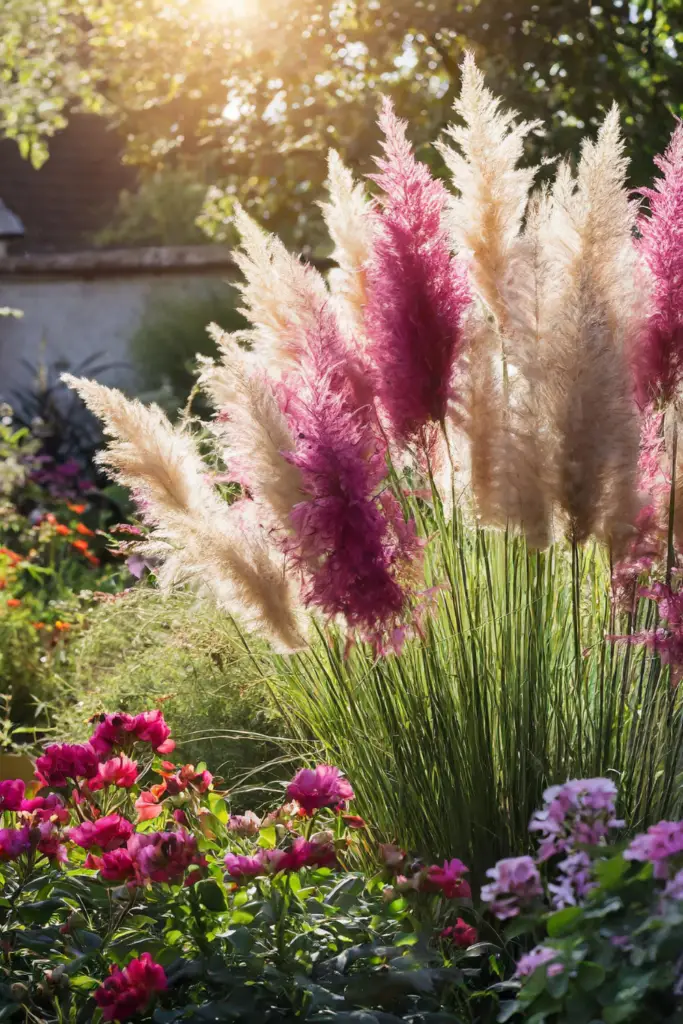
There’s more to flowers than a simple round daisy or a ruffly rose. That’s why I’m looking to bring more feathery flowers into my garden to add an unexpected airy touch. I find these flowers almost always rippling with movement and grace that can elevate even the grimmest corner of your plantings. Frost-hardy grasses with feather-like petals are often my go-to but there’s no part of the botanical world that’s lacking in fine plumage.

Quickly Find Feather Flowers You’re Looking For:
1. Astilbe
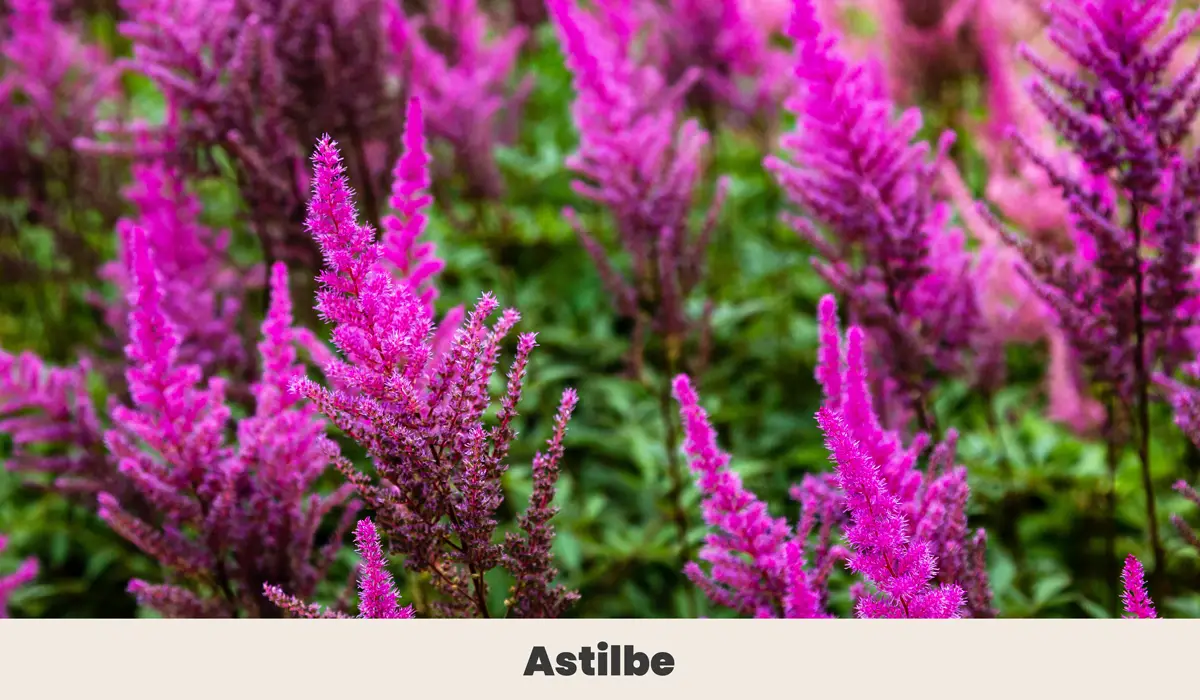
Sometimes called false goats beard, astilbes are a group of ethereal bloomers, with sweeping flower heads of rich reds, regal purples and delicate shades of blush and mauve. Mass plantings always make me think of fairy gardens and fantasy tales thanks to the dense swathes of magical color.
You Might Also Like:
Once the summer season has cast its spell, the flower heads die off to reveal seed heads that are just as captivating, though less dramatic. They’re an excellent choice for shaded glens, turning dark corners to fairy grottoes.
| Botanical Name: | (Astilbe spp.) |
| Growth Rate: | Moderate growth rate from 12 to 36 inches tall and spread by forming clumps or colonies over time. |
| Native Range: | Native to mountain ravines and woodlands in Asia and North America |
| Hardiness Zones: | Semi-shade-loving perennial is hardy to Zone 4 |
| Soil Needs: | A heavy feeder that will grow well in damp soil with good drainage |
| Blooming Period: | Blooms from late spring to late summer |
2. Blazing Star
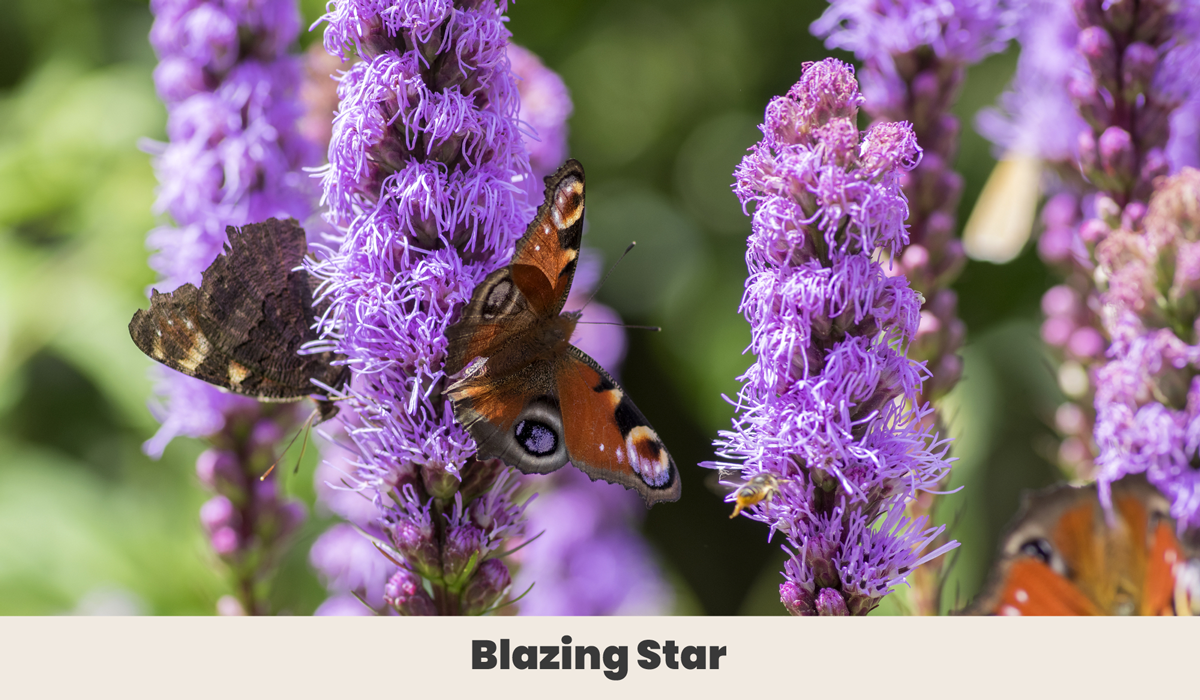
Blazing Star is a purple American wildflower well known for its fluffy blooms that it’s also known as the ‘prairie feather’. It’s unassuming most of the year, but once the summer rolls around it erupts in tall purple spires of cheerful color.
They’re a great choice for cottage gardens in warmer regions, as they are drought-hardy and very low maintenance. They’re also a great food source for butterflies, bees and other vital insects.
| Botanical Name: | (Liatris spicata) |
| Growth Rate: | Medium – 10-20 inch spread 3-6 stalks by year 3. |
| Native Range: | Eastern United States |
| Hardiness Zones | Thrives in USDA Zones 3 to 8 |
| Soil Needs: | Flourishes in moist loamy soil with good drainage to prevent root rot |
| Blooming Period: | Blooms for 4 weeks from July – August |
3. Broom Sedge
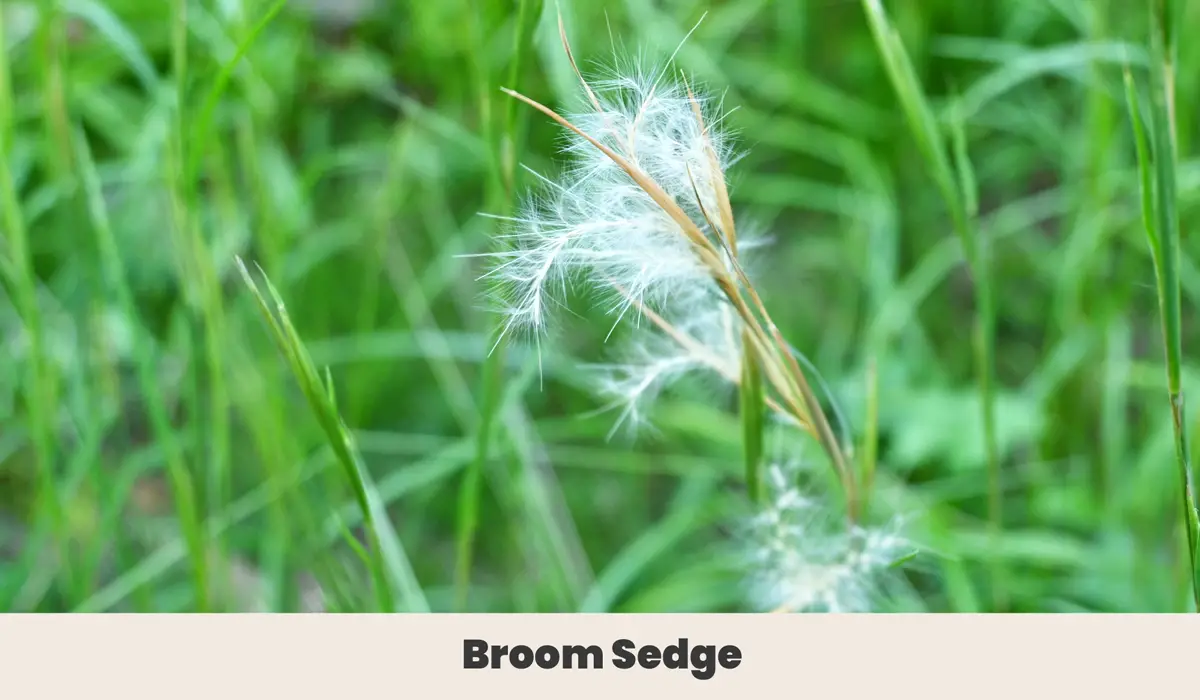
Grasses often have feathery flowers that are so plume-like its easy to forget that they’re blossoms, and the broom sedges are no exception. So delicate are its downy blooms one might assume a passing dove has shed a few of its softest feathers.
I’ve opted to showcase the A. virgini species of broom sedge here, but it’s just one of many American natives. There’s quite a few that share the same group of names, often sold as brushy bluestem, bushy bluestem, broom grass or beard grass. All are a critical prairie plant, providing seed to native birds and cover for the many small creatures that call the open plains home.
| Botanical Name: | (Andropogon virgini) |
| Growth Rate: | Quick-growing grass that will flower in its second or third year after seed. Can reach up to 4 feet tall once mature. |
| Native Range: | Native to the southeastern United States and extends as far north as the Great Lakes |
| Hardiness Zones | Hardy in USDA Zones 3a to 9b |
| Soil Needs: | Thrives in sandy soil and requires soil that is moist but can occasionally be dry |
| Blooming Period: | The flower inflorescence appears in September, turns bright orange in fall, and is attractively silver when backlit |
4. Celosia
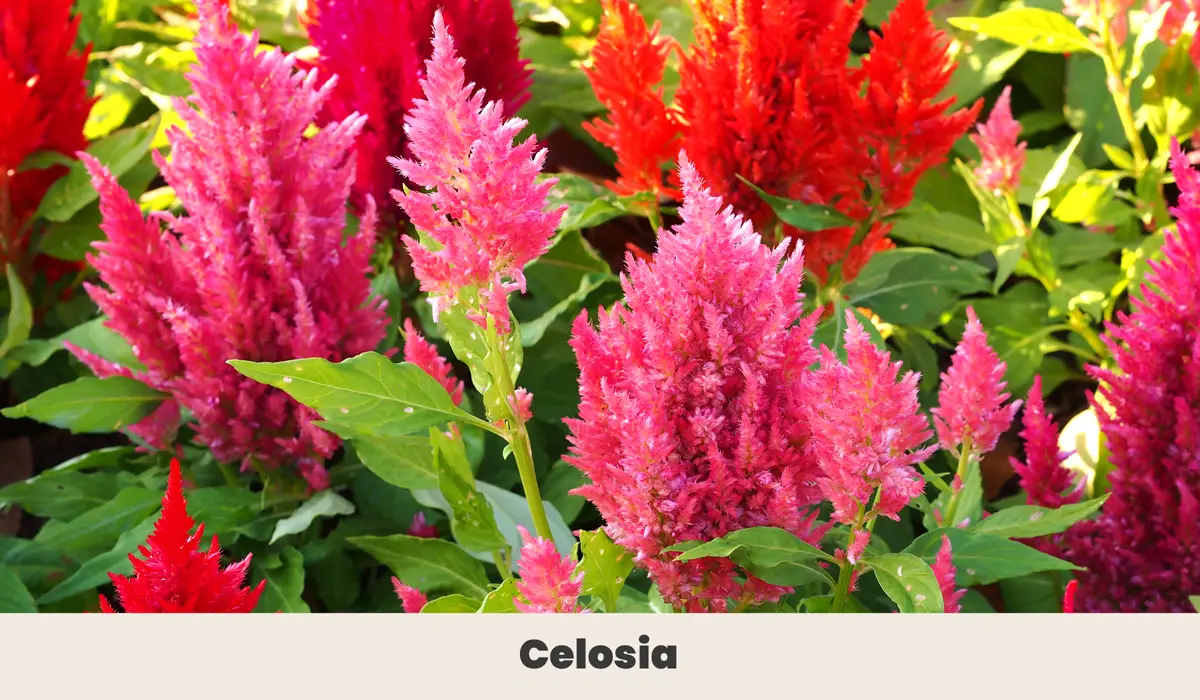
Celosias are one of the most versatile of the feather flowers. They produce three types of blossom – cockscomb, wheat, and plumed – in an astonishing range of vibrant colors. Their leaves are just as arresting, and range from the shades of green you’d expect to more lush blues, purple, and burgundy.
Celosias also a snap to grow. They strike seed easily and can be cultivated from cuttings too, and will grow just as vigorously in containers as they do in a garden bed. About the only regular maintenance they need is a monthly feeding and the occasional deadheading to promote even more of their vibrant blooms.
| Botanical Name: | (Celosia spp.) Amaranthaceae Family |
| Growth Rate: | Fast – Can reach up to 1-2 feet within 6 weeks |
| Native Range: | Tropical regions |
| Hardiness Zones: | Thrives in USDA Plant Hardiness Zones 10a, 10b, 11a, and 11b |
| Soil Needs: | The ideal soil for Celosia is well-drained with a slightly acidic to neutral pH |
| Blooming Period: | Flowers onset quickly from 4 weeks after seed. Blooming time, mid-summer to early autumn up to the first frost. |
5. Chinese Silver Grass

Chinese Silver Grass is sometimes called ‘maiden grass’ for its compact size and graceful form. It’s a hardy plant frequently used as a background plant for landscaping, allowing its gentle silvery inflorescence to serve as a contrast to more striking plants.
This does sell the Chinese silver grass short, however. It’s been cultivated heavily and is available in a host of different varieties with variegated leaves, denser heads, and a range of heights to suit most gardens. I’m personally fond of the ‘Sabonde’ cultivar, with its richer golden heads and darker leaves, as well as the dainty ‘Cabaret’.
| Botanical Name: | (Miscanthus sinensis) |
| Growth Rate: | Moderate growth rate reaching 4-12 feet tall once established! |
| Native Range: | Native to Eastern Asia |
| Hardiness Zones: | Thrives in USDA Plant Hardiness Zones 5a through 9b |
| Soil Needs: | This plant prefers soil textures ranging from clay to loam (silt) and sand, including shallow rocky soil. Neutral to Alkaline pH. |
| Blooming Period: | Blooms from July-February |
6. Feather Flower
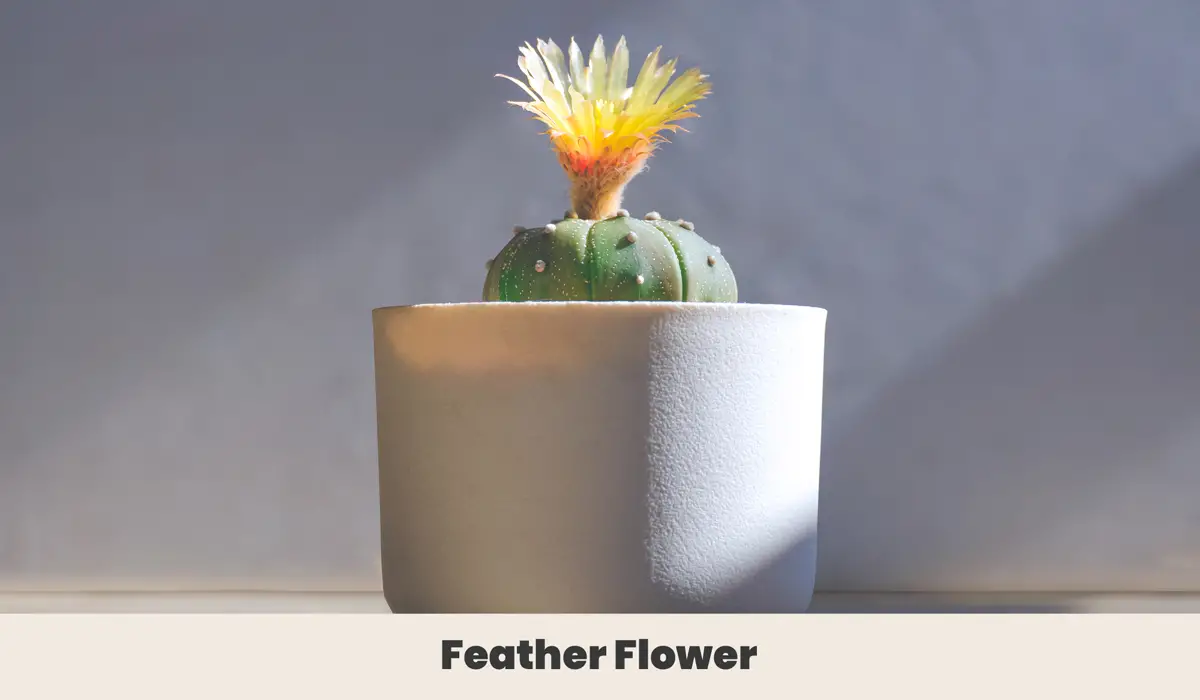
No list of feathery flowers is complete without the eponymous feather flower, a rare cactus native to Texas and small areas of the surrounding states. It’s also known as the star cactus or the sea urchin for its dainty size.
When this little jewel decides to flower it produces a bloom so delicate that each petal seems to be a single radiant feather arrayed around a downy heart. The whole cactus has a soft and fuzzy appearance, with many specimens developing downy spines that mimic its feathery name.
| Botanical Name: | (Astrophytum asterias) |
| Growth Rate: | Slow – Expect to wait 4 years before the first flower appears |
| Native Range: | Native to the lower Rio Grande Valley of Texas in the United States and eastern regions of Mexico |
| Hardiness Zones: | Hardy through USDA zone 9 |
| Soil Needs: | Grows well in rocky soil with excellent drainage |
| Blooming Period: | In native regions, flowering begins in March then fruiting from April to June |
7. Feather Reed Grass
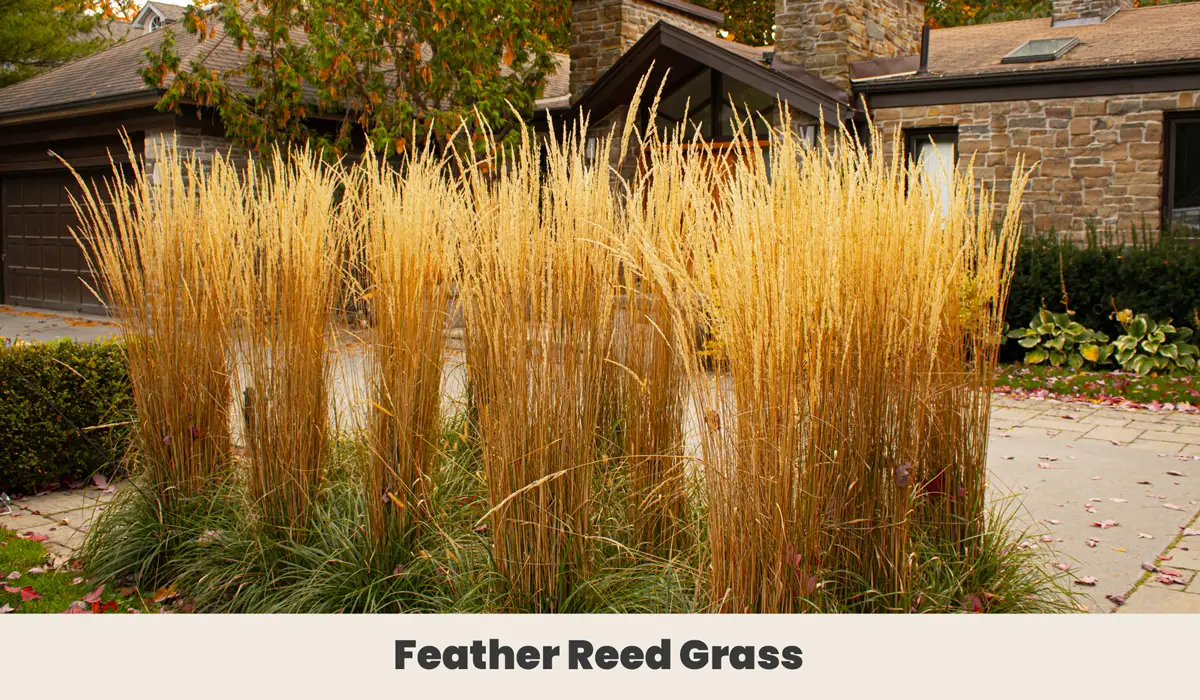
As upright as a soldier in their parade best, the feather reed grass is a stalwart feature for any garden. It’s a cool season grass that grows in compact clumps. Come early summer, it marshals its forces and produces soaring spears that can reach two meters (six feet) tall, a towering battalion of radiant pink-tinged flower stalks. Plant them in a lightly shaded area to help them through the late summer heat.
There are a few different cultivars around, with the early-blooming ‘Karl Foerster’ being the most readily available. The ‘Overdam’ variety is also common, features narrow stripes on the leaves, and is a smaller plant overall.
| Botanical Name: | (Calamagrostis x acutiflora) |
| Growth Rate: | Medium – Narrow flowers reach 2-3 feet tall |
| Native Range: | Hybrid of Calamagrostis epigejos x Calamagrostis arundinacea (Europe/Asia/Africa) |
| Hardiness Zones: | Hardy all the way from zone 4a-11b |
| Soil Needs: | Thrives best in well-drained, fertile soil that does not dry out |
| Blooming Period: | Long – Flowers gradually develop from May to February |
8. Goats Beard

Goats Beard is a charming perennial that produces airy white plumes through the tail end of spring into summer. It’s a dioecious plant, so each specimen is either male or female.
Generally, the male flowers are flashier and sprout larger and more dense inflorescence. Regardless, both types of goats’ beard flower last around ten days, before fading to a rich tan or brown. Female heads then develop tiny seeds. It’s not a fussy flower, you can expect Goats Bear to thrive in full sun or part shade.
| Botanical Name: | (Aruncus dioicus) |
| Growth Rate: | Medium growth rate – 2-3 years before fully established. (3-6 feet tall) |
| Native Range: | Native to the Northern Hemisphere, including North America, Europe, and Asia |
| Hardiness Zones: | USDA hardiness zones 3 to 9 |
| Soil Needs: | Prefers fertile, organically-rich, medium to wet soils |
| Blooming Period: | Late spring to early summer |
9. Hardy Pampas Grass

Hardy pampas grass brings the drama with massive, tall flower heads so feathery they’d put an ostrich to shame. Their enormous blossoms are so dense and fluffy that they look all over the world like huge feather dusters. It also has gorgeous foliage that starts its life tinged with pink before fading to silver and finally scarlet in fall.
Hardy pampas grass is so-called because it’s tough as nails. It’s drought tolerant and could not care less about hot weather, cool weather or nutrient-depleted soils. You can prune it right back in winter for dense growth in spring, but be sure to wear gloves – the leaves are razor-sharp!
| Botanical Name: | (Tripidium ravennae) |
| Growth Rate: | Medium growth rate – large dense clumps can reach up to 13 feet tall |
| Native Range: | Native to Southern Europe, Western Asia, and South Asia |
| Hardiness Zones: | Hardy from zone 5a-9b |
| Soil Needs: | Drought tolerant, prefers dry soil with plenty of space. |
| Blooming Period: | Tall upright blooms appear in the late summer changing to red in the fall. |
10. Mexican Feather Grass
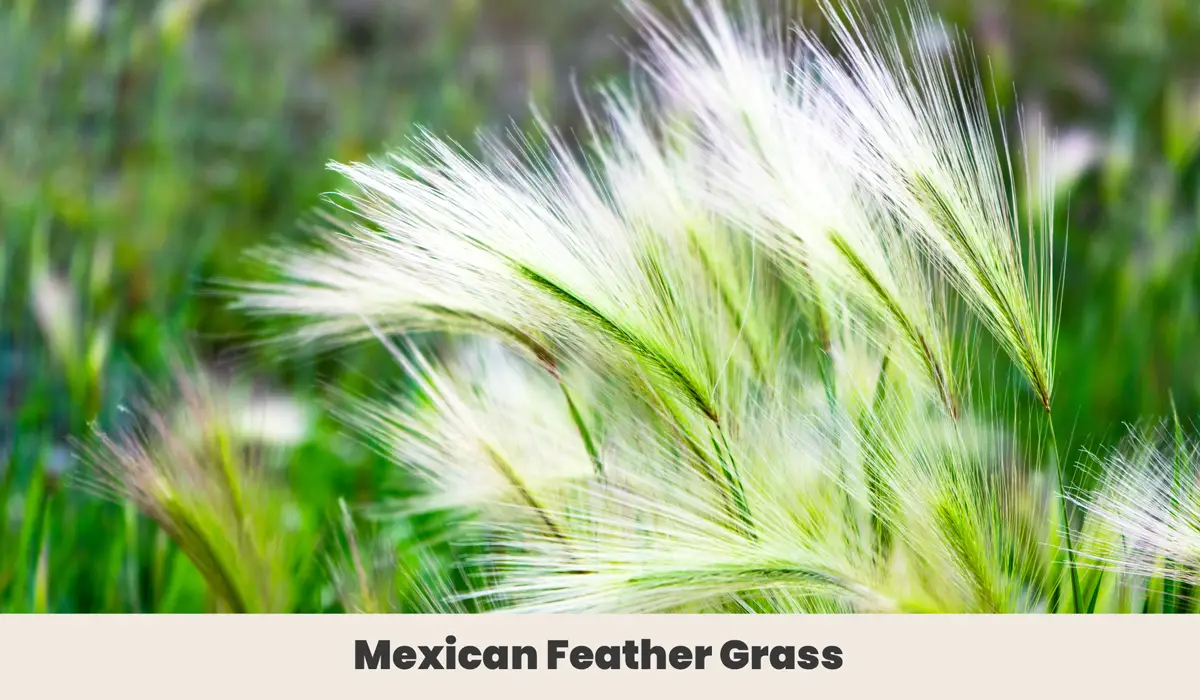
Always airy and windswept, the Mexican feather grass (Nassella tenuissima) manages to have a glamour to it that seems contradictory given we’re talking about a grass. Its blades are fine and sway gracefully in even the most delicate breezes, and its airy plume-like flowers evoke the effortless coif of a starlet on a casual weekend away.
The Mexican feather grass is a compact grower native to the southern United States and Central America, and it grows well in dry, stony soil. It’s a great candidate for adding a bit of softness to xeriscapes or rock gardens.
| Botanical Name: | (Nassella tenuissima) |
| Growth Rate: | Medium – 1-2 feet wide and tall once established |
| Native Range: | Native to a range that includes Texas, New Mexico, Mexico, and Argentina |
| Hardiness Zones: | Zone 7-10 |
| Soil Needs: | prefers well-draining soil |
| Blooming Period: | June-September |
11. White Feather Pampas Grass
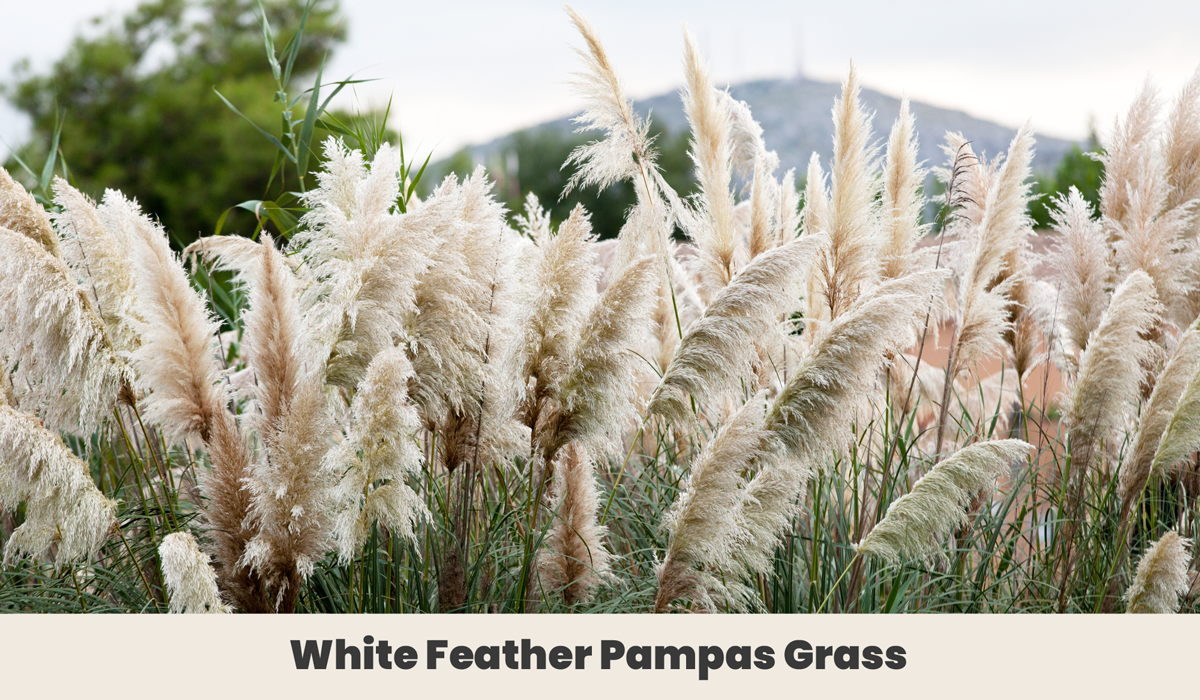
A feisty grower, the white feather pampas grass (Coraderia selloana) does not surrender to hot conditions or dry soils. It hails from dry, temperate regions of South America, and as a consequence is not fussy at all about its conditions.
In fact, if you’re in warm areas it pays to deadhead regularly, as they self seed easily and spread like mad. This is a rewarding task despite the hazards of sharp leaves, as each frothy flower lasts almost indefinitely indoors. They’ve been known to reach up to 4 meters (12 feet) tall, so make sure you have a good sized vase to hand!
| Botanical Name: | (Coraderia selloana) |
| Growth Rate: | Rapid – 28 inches in height each year |
| Native Range: | This ornamental grass is native to temperate South America |
| Hardiness Zones: | USDA zones 6a to 10b |
| Soil Needs: | prefers well-draining, fertile soil |
| Blooming Period: | Blooms from summer through winter |
Final thoughts
Precious plumes and fantastic feathers bring a much-appreciated variety to my plantings. The airy grass flowers provide an easy, low-maintenance charm, and nectar-filled blossoms keep butterflies and other pollinators well entertained. Feather-shaped flowers don’t need to be flighty but can provide consistent interest and ecological benefits too. And of course, the garden is never short of beauty when these treasures burst into bloom.


Before you go!
12 Low Maintenance Perennial Flowers For Your Garden
11 Weeds With Purple Flowers | Common Lawn Weeds & Hidden Gems in Your Yard
11 Types Of Wildflowers That Will Grow In Your Zone + Growing Guides
From Boring to Breathtaking: Discover the Top Flowers to Pair with Carnations!